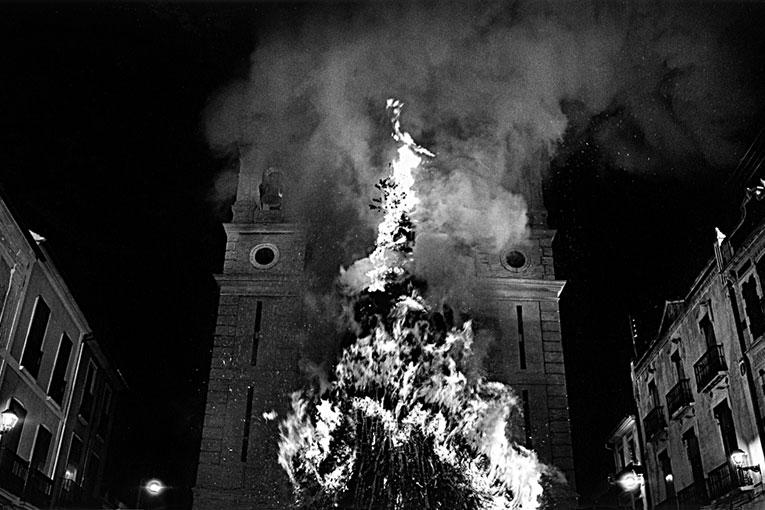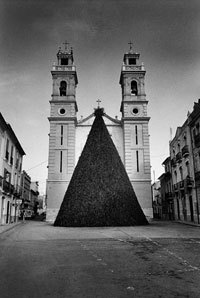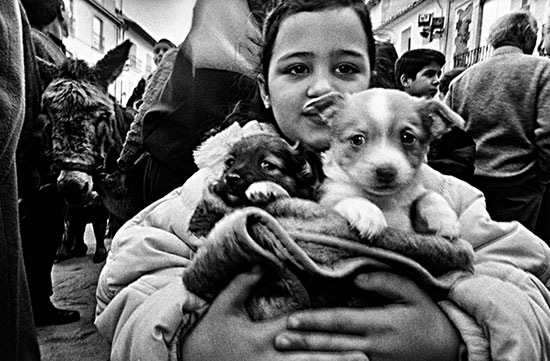
|
Immersed in modernity the festival has become a reflexive celebration of identity, a gateway to transcend everyday life. It is a special time to regain consciousness in front of a world that is disoriented by de-traditionalisation and globalisation, which is running increasing risks and undergoing a dizzying re-composition. The festival is part of our cultural heritage, inserted in what we known as ethnological heritage, and include different types of goods that range from rites to concrete objects. The involvement of social agents and the thoughtful and intense nature of the festival present it as a celebration that transcends our heritage, which becomes a heritage experienced by the celebrating subject. In this sense the festival represents the ritual reflexiviness of heritage, which, like the festival itself, is free-flowing, ever-changing and expansive. Thus, to the extent that the festival changes, there is a continuous revision and update of tradition, which in turn implies plasticity and social redefinition of heritage. The festival becomes a heritage condenser that can be internalised by social subjects, as a liturgy of local identity and a reflective response to the risks inherent in our globalised modernity. The feast of Saint Anthony, celebrated throughout the whole of the Valencia region, is influenced by every connection mechanism between festival and heritage. It originated in the Western world as a result of the Christianisation of ancient pre-Christian ceremonies dedicated to pagan deities, who were the protectors of fertility, crops and animals. As patron saint of animals, saint Anthony the Abbott has historically been revered by farmers and anyone dealing with livestock. The festival is widely spread throughout the Valencia regions, with a higher popularity in the northern and central districts, where we find an array of festive rituals such as bonfires, animal blessings, neighbourhood meals, fairs and porrats, races and games. Events are combined in different ways in different populations, to the point that once established and sanctioned by what is socially defined as «tradition» they become complementary to each other. Saint Anthony’s Festival is held in at least 320 Valencian towns, which is not surprising considering that Valencian society has historically been mainly agricultural and rural. This festival of Saint Anthony the Great or the Anchorite, as he is popularly known, has quintessentially been our winter holiday, a prelude to carnival. Although the saint lived in the fourth century in Alexandria, there is a full medieval and baroque hagiography that is accompanied by a deep-rooted popular devotion embodied in different brotherhoods, probably since the foundation of the Kingdom of Valencia. |
 © Mario Rabasco |
|
 © Mario Rabasco |
«Saint Anthony’s festival originated in the Western world as a result of the Christianisation of pre-Christian ceremonies dedicated to pagan deities, who were the protectors of fertility, crops and animals» |
|
|
Throughout our country we can find a variety of ways of celebration that enrich our festive catalogue. Thus santantonades in the northern districts, held in towns such as Morella, Vilanova d’Alcolea, Vilafranca or Zorita del Maestrat, as well as the porrats route in La Safor and Canals bonfires become prominent. However, the festival has undergone transformations following modernisation and industrialisation. In fact, on the onset of urbanisation the festival experienced a major setback, and in many places it disappeared. However, since the early 1980s, thanks to the initiative of numerous groups and associations, it has regained popularity, albeit including relevant changes. Thus, if traditionally saint Anthony was the patron of draft animals, now his patronage also covers urban pets (dogs, cats, turtles, birds of every kind, hamsters) that families bring for blessing on the saint’s big day. Corregude de joies, bandejament del gall or the release of a piglet that was fed by the neighbourhood until raffled on the saint’s day are events that have also been disappearing. Another important element is the transfer of celebration dates (usually weekends close to the day of the liturgical celebration) to accommodate the working patterns of modern society, especially in cases where the festival is not a local holiday. However, as stated above, coinciding with the wave of revitalisation of holiday traditions and their heritage status based on identity and tourism interests, the festival of Saint Anthony has experienced a revival in the last two decades and today it enjoys great popularity . At present there are two elements particularly relevant to the festival: bonfires and the blessing of animals. In any case the ritual of Saint Anthony, which has been made visible and popularised through the media, is divided into two main phases: the preparation of the ritual and the celebration itself. The first element involves a whole associative network composed of brotherhoods, foremen, ceremonial groups, draftees or just festivity lovers. Bonfires are prepared by cutting down and transporting firewood, with which spectacular structures are made, as it happens in Canals. As for the big celebrations, their complexity depends on whether it is a street or block festival or a local festivity. They tend to focus on the eve of the saint’s day, when bonfires are lit, some of which are very unique, like matxada and tropell in Vilanova d’Alcolea, the dance of demons in Morella, parades in Pàixaro de Biar, or the stall set up where the saint’s life is dramatised in Els Ports. Animal blessings usually take place during the main day, which is normally accompanied by different traditional dishes (grilled sausage, rice casseroles, cakes and rolls farinetes or porridge, porrats …) as well as by popular games, races, fireworks or shooting and dragging competitions. The big celebration is usually rounded off with masses and processions, however, beyond popular religiosity, nowadays it expresses a self-reflective identity and the exaltation of this new civil religion that cultural heritage is. |
||





